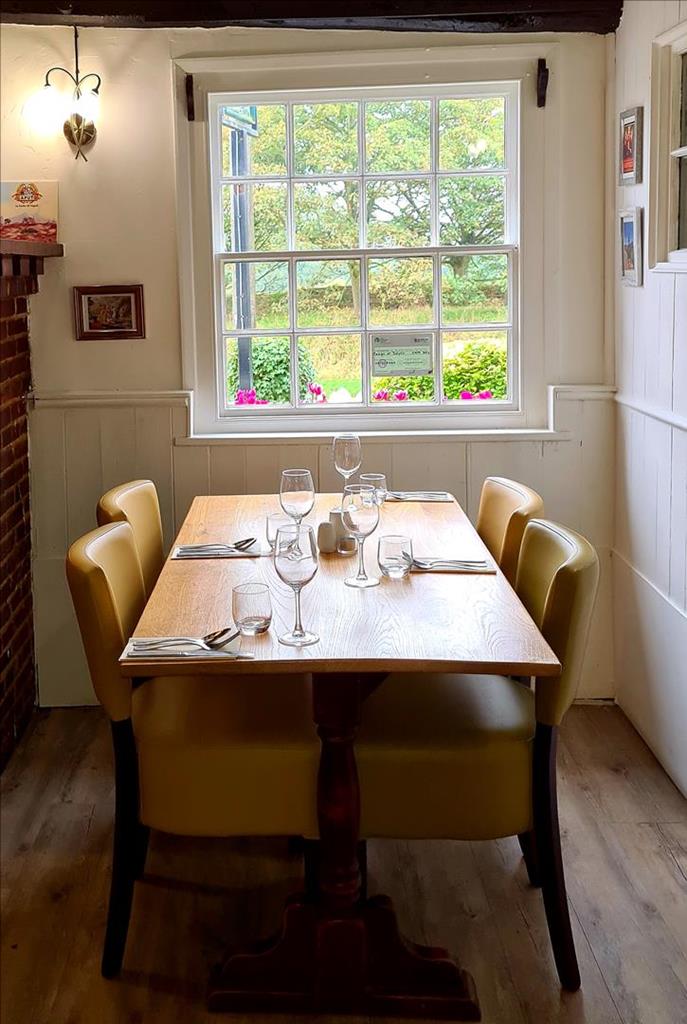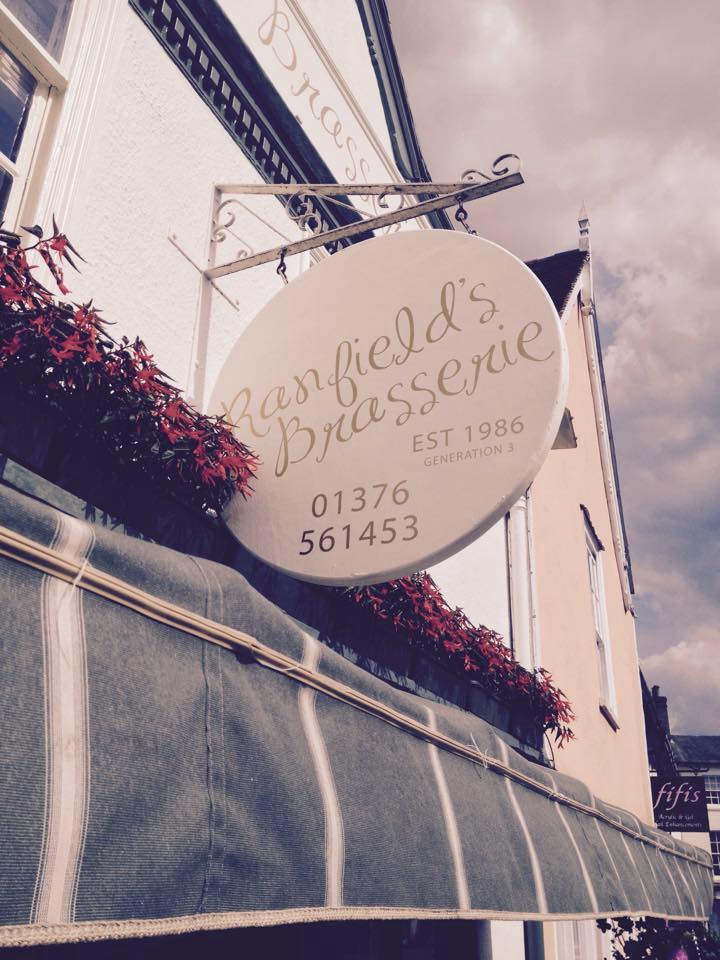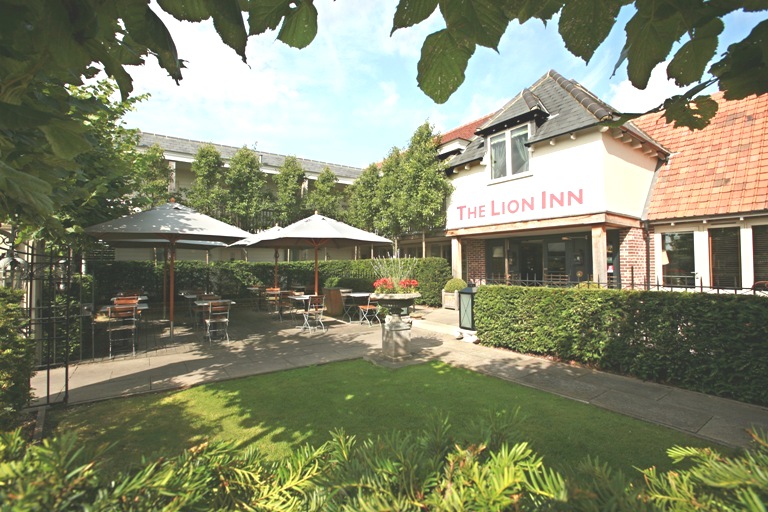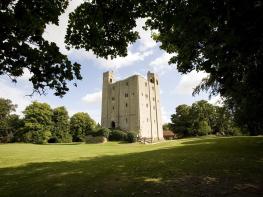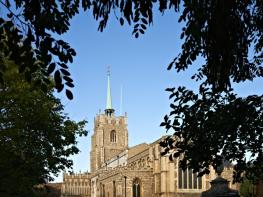Guest accommodation at Motts Cottage is a large, spacious en suite room in a garden annexe,…
Braintree and the Flitch Way

Enjoy Braintree's industrial heritage and a stroll along a disused railway.
4.5 miles (7.2kms)
About the walk
The attractive town of Braintree sits astride the junction of two Roman roads, where The White Hart Hotel, a former coaching and posting house, now stands. In the 19th century Samuel Courtauld, a descendant of a Huguenot weaving family, created a successful textile industry in the town. Further prosperity was brought by iron foundries and manufacturing businesses, including the window-making enterprise set up by Francis Crittall, who started as an ironmonger in the late 19th century. He became one of the town's major employers, producing metal-framed windows, the forerunner of double glazing.
Heritage in abundance
In this walk you will discover Courtauld's and Crittall's contributions to the town and see how Braintree is facing the future with a regeneration programme. Yet for all the changes, the town still retains links with the past with an interesting heritage trail and a linear country park following the railway line, from Braintree to Bishop's Stortford, abandoned in 1969.
The wildlife corridor
The railway helped to make Braintree a thriving industrial centre in the 19th century and its demise has in turn enabled wildlife to thrive. The Flitch Way, which begins at the junction of Roman roads from Chelmsford and Colchester at Braintree Station, is 15 miles long and has become a popular place to walk and cycle. On the corner of Coggeshall Road and Gressing Road at Point 4 is the site of the former Kings Head pub. Opposite this once stood a huge oak tree, which was removed in 1964 when it became dangerous. Many townspeople remember sitting on the bench beneath it to watch the world go by. In Cressing Road there is an interesting mix of late 19th-century cottages, and an impressive thatched cottage dating from 1620.
Walk directions
The walk starts from Braintree Station, where a set of buffers terminates the old line from Liverpool Street in London to Bishop's Stortford. Beyond is the Flitch Way, a tarmac trail approached via the path at the western end of the station car park by a Flitch Way Country Park sign. The path soon crosses the bridge over Notley Road. After a mile (1.6km) the path crosses the bridge over the B1256, shortly followed by a crossing of paths.
Turn right through a squeeze stile and follow the waymarked path through a housing estate. The path runs parallel to the Flitch Way for a few yards before crossing a footbridge, later bearing right as indicated by the waymark. Keep ahead through trees and another housing estate. Keep the river on your right until you reach a metal bridge adjacent to Clap Bridge on Rayne Road, the former Roman road of Stane Street.
Cross the bridge, turn right along the road and continue over the roundabout into town, past George Yard to The White Hart Hotel. Pass to the right of the hotel into Coggeshall Road and keep ahead to the double roundabout. Turn right here along Railway Street to reach the Braintree Museum. Otherwise, cross Railway Street. On your right there is a block of apartments fronted by a heritage board describing the site of the Crittalls Manor Works, demolished in 1992. Continue along Coggeshall Road, looking out on your left for John Ray Street, where a pair of weathered timber gates mark the entrance to the recreation ground, a gift to the town from Julian Courtauld.
Turn right at the traffic lights by the former Kings Head pub into Gressing Road. At the end, by a triangular green, cross over to Clockhouse Way, a conservation area of houses constructed with concrete blocks and flat roofs which once contained Crittall metal windows. Built for Crittall workers in 1918–19, the design was copied, in 1926, at Silver End (to the southeast of Braintree). Return to the junction and continue down Chapel Hill. At the end, bear left to the roundabout.
Turn right onto Mill Hill. Go under the railway bridge, and on the left is another heritage board describing the site of an old flour mill which Courtauld converted into a silk mill, and which is now a residential area. Turn right up Skitts Hill, go under the railway bridge and take the first right into The Yard, a modern complex of apartments. Keep left and follow the footpath towards the gas works where a heritage board describes the function of Lake and Elliot's Power House, which generated electricity for use by the town's businesses until 1946 when the National Grid started lighting up the country. The firm originally produced cycle parts then expanded into jacks and armour plating for the military. Like other businesses they no longer operate in town, but they have been replaced by new initiatives keeping Braintree the bustling town it has always been. Follow the footpath into Manor Street, turn left passing modern developments in Trinovantian Way and return to your car park.
Additional information
Grassy and gravel tracks, some street walking
Wildlife-rich railway cuttings, river bank and urban landscape
Pedestrians and dogs share Flitch Way with cyclists and horses, so may have to be on lead
OS Explorer 195 Braintree & Saffron Walden
Pay-and-display car parks at George Yard, Manor Street (behind the library) and Braintree Station
Ground floor of George Yard car park and Braintree Station
WALKING IN SAFETY
Read our tips to look after yourself and the environment when following this walk.
Find out more
Also in the area
About the area
Discover Essex
Essex is full of pleasant surprises. It has the largest coastline of any county in England, with its fair share of castles, royal connections and scenic valleys. Take Colchester, for example, which was built by the Romans and is Britain’s oldest recorded town. Its castle contains the country’s largest Norman keep and yet, a stone’s throw from here, East Anglia’s newest arts centre promises to put Colchester firmly on the map as Essex’s capital of culture.
Tidal estuaries are plentiful and their mudflats offer migrating birds a winter feeding place. Essex was known as the land of the East Saxons and for centuries people from all over Europe settled here, each wave leaving its own distinctive cultural and social mark on the landscape. Walking a little off the beaten track will lead you to the rural retreats of deepest Essex, while all over the county there are ancient monuments to explore:
- the great Waltham Abbey
- Greensted, thought to be the oldest wooden church in the world
- the delightful village of Pleshey has one of the finest examples of a former motte-and-bailey castle
- Hedingham Castle, magnificently preserved and dating from the 11th century.
Nearby stays
Restaurants and Pubs
Nearby experiences
Recommended things to do
Why choose Rated Trips?
Your trusted guide to rated places across the UK
The best coverage
Discover more than 15,000 professionally rated places to stay, eat and visit from across the UK and Ireland.
Quality assured
Choose a place to stay safe in the knowledge that it has been expertly assessed by trained assessors.
Plan your next trip
Search by location or the type of place you're visiting to find your next ideal holiday experience.
Travel inspiration
Read our articles, city guides and recommended things to do for inspiration. We're here to help you explore the UK.


